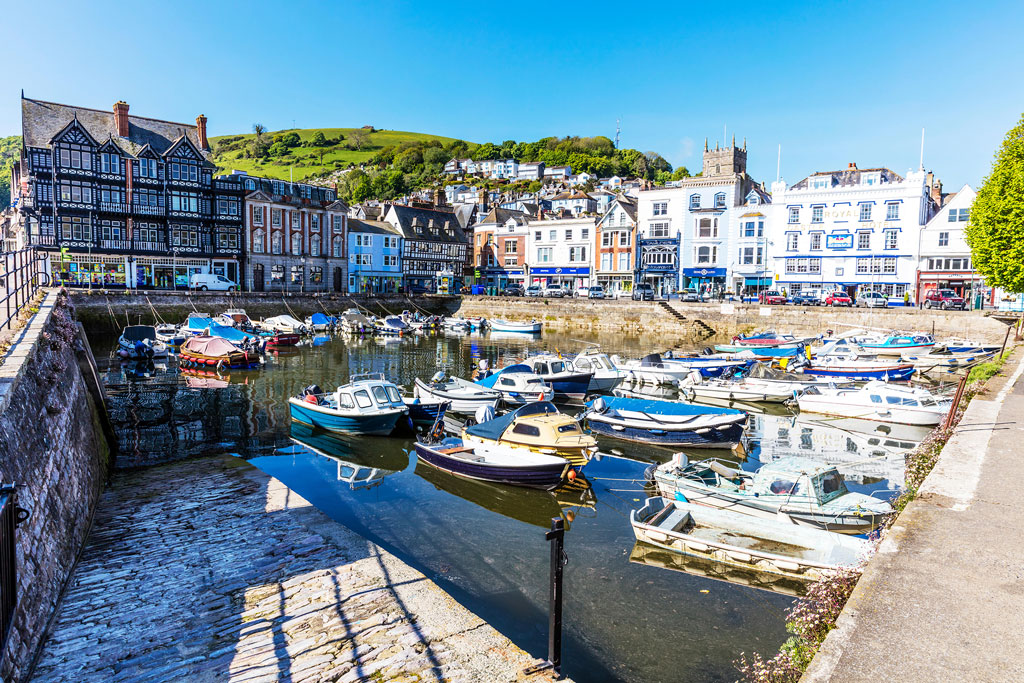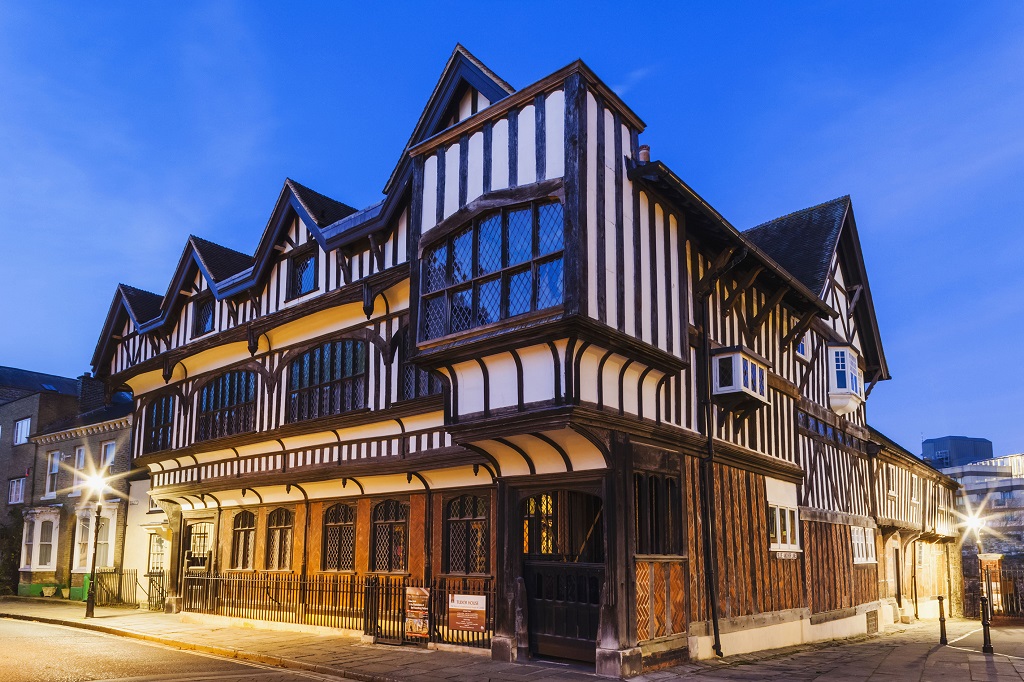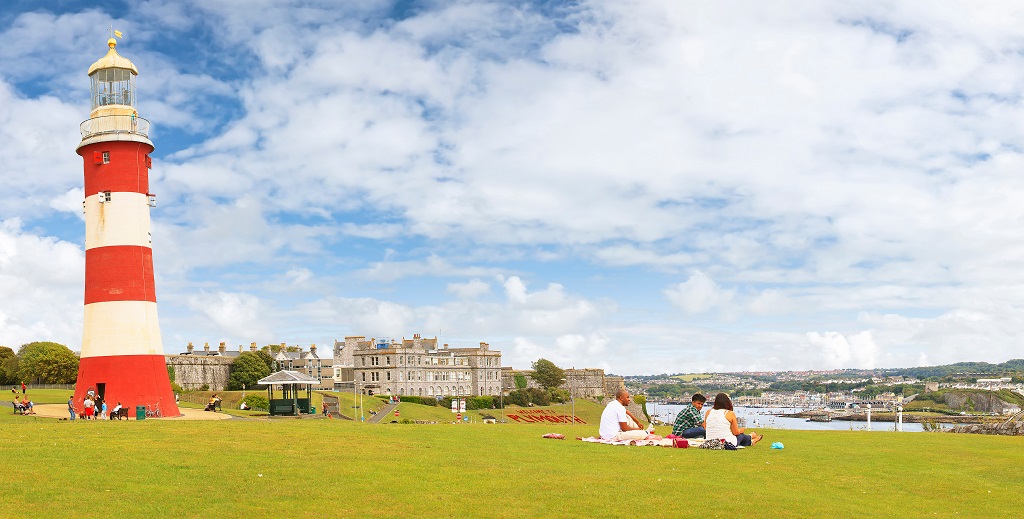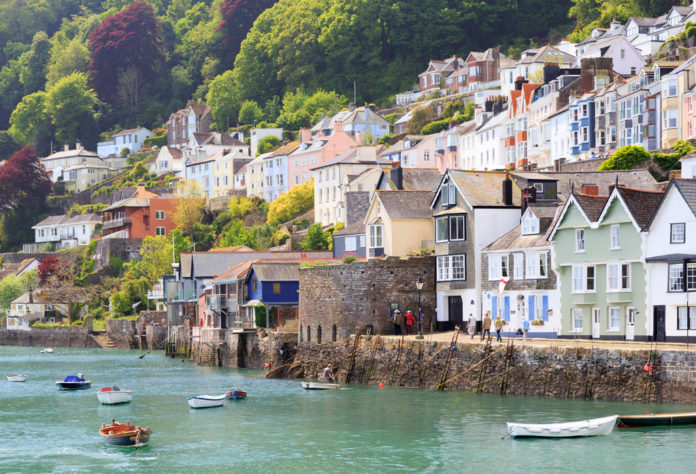In the first part of our Mayflower series we walked in the footsteps of the early Puritans. Here we pick up the trail on England’s southwest coast
In 1620 two ships set sail for the New World. Had providence seen fit for them both to land we might now be celebrating 400 years of a double voyage. As it is, the smaller Speedwell sprang a leak while the Mayflower sailed into history alone, but only after a couple of unscheduled stops…
The ships set sail from Southampton, a thriving sea port. After a brutal pirate raid in 1338, the town had been rebuilt, walled and fortified. It was an ideal place to start the voyage, thanks to established transatlantic trading links, an experienced pool of local sailors, and the availability of goods required both for the voyage and for the community that was to be set up thereafter.
The Speedwell, which had ferried the group from the Netherlands to Southampton, was already leaking. The ships lay at anchor for almost two weeks while it was repaired, some of the Pilgrims having to sell their belongings and precious supplies bought for the voyage to pay port fees.
READ MORE: Pilgrims’ progress: Dissent deep in the heart of the England (Part one)
We don’t know exactly how much of Southampton the Pilgrims would have known. “They would have bought supplies in the town,” says tour guide Jack Wilson, “and there was at least one local man on board. John Alden was hired as a cooper, an important job when all supplies were in barrels.” A network of around 50 vaulted, medieval cellars have been discovered, 12 of which may be explored by the public if accompanied by a key-holder such as Jack.
Southampton repays guided tours. Small and grid-like, the old town is easy to navigate but surprisingly hard to interpret. Jack also holds keys to Southampton’s famous Bar Gate, otherwise closed to the public. The views from the building’s roof are filled with history, ancient and modern.

Tudor House was one of the finest merchant’s houses in Southampton. Now a museum, recent renovations have revealed some fascinating secrets, including a wall of medieval graffiti. Henry V set sail for his famous battle at Agincourt from here and the courthouse where he tried traitors survives. Now the Red Lion pub, the great hall still carries its ancient beams, original fireplace and air of mystery. Elsewhere, the Dolphin coaching inn may have hosted Pilgrims.
Some places can be more definitely associated with the Mayflower. The church of St Michael, founded in 1070, would have been known by the Pilgrims, and they had to pass through the West Gate to get to their ship. Land has been reclaimed around West Quay; the Grand Harbour Hotel, built in the 1980s, sits pretty much where the great ship once lay at anchor.
The pilgrims would also been familiar with God’s House Tower. Built in 1340, the fortress was originally built for defence but by the 1600s its sturdy walls had a different role, as the town gaol. Until recently derelict, it is just about to enjoy its next transformation, to a museum and arts space, in time for the Mayflower 400 commemorations.
The two ships departed Southampton on 5 August 1620. Not everyone on board was there by choice, and it’s rumoured some of the crew may have ‘made sure’ the Speedwell leaked after it left Southampton. Whether or not this is true, on 23 August both ships sought temporary refuge in Dartmouth, a small port in Devon.
We don’t know if anyone actually set foot in this lovely old town during the ten days’ emergency repair work, for fear of disgruntled crew members absconding. It’s possible some passengers briefly landed, but most would have had to settle for long-distance views of Dartmouth’s cobbled streets and the Tudor Bayard’s Cove Fort.

Town Crier Les Ellis and his wife Liz conduct guided tours of Dartmouth in full ceremonial regalia, cleverly avoiding the town’s 10,000 steps to enjoy sights the Pilgrims may – or may not – have seen. A lovely old Tudor house, whose overhanging first floor once formed a covered butter market, now houses Dartmouth Museum. Plans are afoot to expand its floor space to include even more information about the town’s history, including the Mayflower.
Even if they did set foot on land, the Separatists would have avoided St Saviour’s Church. No one else should. A jewel box of medieval treasures, it houses a rare wooden rood screen, one of the finest church doors in England and a wonderful carved altar.
With the Speedwell declared watertight, the ships headed out once more into the English Channel, bound for the North Atlantic. Just 300 miles beyond Land’s End in Cornwall, however, the Speedwell began leaking again. Both ships were forced to return to shore, this time to Plymouth.
By now, the group had spent six weeks on the ship, cooped up in damp and uncomfortable conditions. When the Speedwell was declared unfit for the journey some of the passengers gave up; the rest crowded onto the Mayflower. Once restocked with provisions, the ship would depart for the New World. Plymouth was a Puritan town and the Pilgrims were made welcome, staying with locals while the ship was refitted. The Elizabethan House on New Street may have hosted some of them. Dating back to the 1580s, it is currently undergoing repairs, ready for the 2020 celebrations; visitors can still, in the meantime, enjoy its evocative garden.
The stunning timberwork on the Merchant’s House, another 16th-/early 17th-century building, is also being restored and improvements are being made around the famous Mayflower Steps. The original steps are sadly lost, so the granite memorial at the harbour serves as a central point for commemoration.
Walking around the harbour, the oldest part of the city, it’s still possible to find a flavour of the Mayflower. Visitors can also see the city’s oldest building, now the famous Plymouth Gin Distillery, where it is thought some of the Pilgrims may have dined before their departure. St Andrew’s Church, which would have been known to the Pilgrims, was gutted in the Second World War, but its walls remain, and the interior has been sensitively rebuilt.
Further into the city, a brand-new cultural complex, The Box, is nearing completion. Its first major exhibition will be Mayflower: Legend and Legacy, following an international search for objects and artefacts telling the Mayflower’s story.

The show is just one of scores of events that were planned for 2020, many of which have been either cancelled or postponed until 2021 due to the pandemic. Mayflower 400 is an umbrella community bringing together people in England, the Netherlands and America to celebrate the momentous voyage and its legacy, while taking time to remember the enormous impact the arrival of the colonists had on Native Americans and the land that had been their home for centuries.
On 16 September, the Mayflower finally set sail from Plymouth, bound for the New World. 102 passengers and 30 crew embarked upon the perilous crossing, finally landing in a wintry Cape Cod on 11 November. Emerging from the ship, they could never have imagined that their voyage would change the course of world history: it is estimated that more than 30 million people can trace their ancestry to those on board.






 © 2024
© 2024